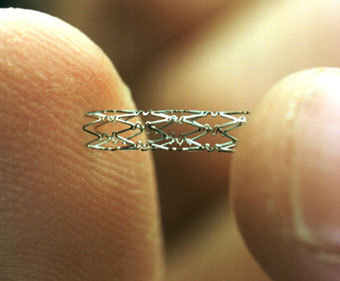
Results from the Carotid Stenting Trialists’ Collaboration (CSTC) that were presented at the European Stroke Conference (ESC, Lisbon, Portugal) revealed that patients treated with stents that had a closed cell design were significantly less likely to suffer a periprocedural stroke or die when compared with patients treated with stents with an open design. The study also revealed that embolic protection devices did not reduce the occurrence of symptomatic cerebral thromboembolic events.
Olav Jansen, director of Institutes for Neuroradiology, UKSH Campus Kiel, Kiel, Germany, and colleagues from CSTC pooled individual patient data from the three large European randomised trials of stenting versus endarterectomy for symptomatic carotid stenosis (ICSS, SPACE, EVA-3S) to investigate the influence of technical aspects of carotid artery stenosis such as stent design, use of an embolic protection device as well as clinical variables on the risk of periprocedural stroke or death.
The analysis was done per protocol, and included 1548 patients treated by carotid artery stenosis in the three trials with information available on stent types and use of embolic protection. The primary outcome event was any stroke or death within 30 days after carotid artery stenting. Nine hundred and fifty five patients were treated with close cell stents (interconnected stent struts, open area <5mm2) and 593 with open-cell stents (not all struts interconnected, open area >5mm2). Embolic protection devices were used in 959 patients; 589 patients were treated without. Allocation for stent-type or use of protection device was not randomised.
The investigators told delegates that the primary outcome event occurred significantly less often in patients treated with closed-cell stents (58 patients,6.1%) than in those who received open-cell stents (60 patients, 10.1%; RR 0.60;95% CI 0.43-0.85;p=0.003). They also noted that primary outcome events occurred in 76 patients (7.9%) treated with an embolic protection device and in 42 patients (7.1%) treated without an embolic protection device (RR 1.08; 0.69–1.68; p=0.74). The effect of protection device remained similar after adjustment for stent design (open cell/closed cell). Clinical variables predicting periprocedural stroke or death were age (p<0.001) and the type of qualifying event (p=0.007). The effect of stent design on the primary outcome event remained similar after adjustment for these variables.
The results led them to conclude that the use of stents with a closed-cell design in carotid artery stenting is associated with a significantly lower risk of periprocedural stroke or death compared with open-cell stents. “Protection devices do not reduce the occurrence of symptomatic cerebral thromboembolic events, independently of the type of stent used,” Jansen noted.













